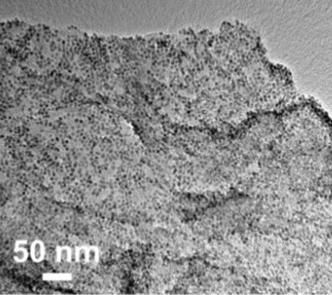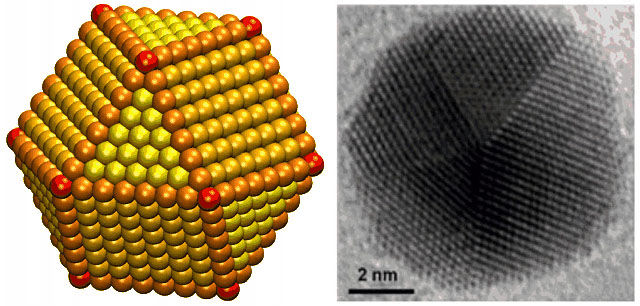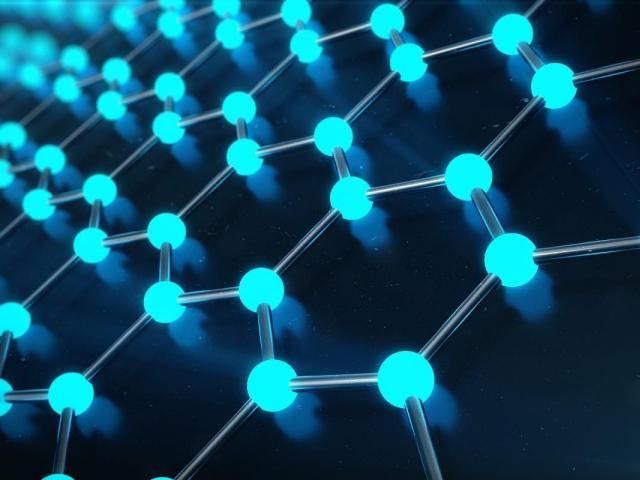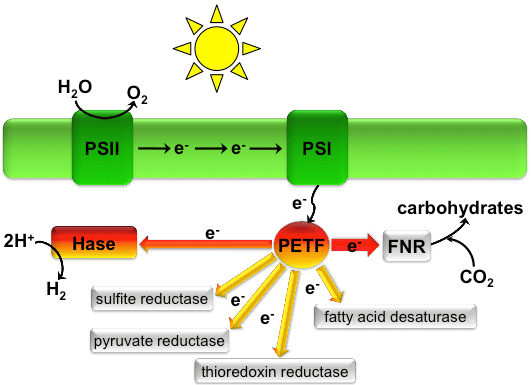Catalyst could make production of key chemical more eco-friendly
The world has more carbon dioxide than it needs, and a team of Brown University chemists has come up with a potential way to put some of it to good use.

This is nitrogen-rich graphene festooned with finely tuned copper nanoparticles selectively converts carbon dioxide to ethylene, a key commodity chemical.
Sun Lab / Brown University
The researchers developed a new composite catalyst using nitrogen-rich graphene dotted with copper nanoparticles. A study, published in the journal Nano Energy, showed that the new catalyst can efficiently and selectively convert carbon dioxide to ethylene, one of the world's most important commodity chemicals.
Ethylene is used to make plastics, construction materials and other products. Chemical companies produce it by the millions of tons each year using processes that usually involve fossil fuels. If excess carbon dioxide can be used to make ethylene, it could help make the chemical industry more sustainable and eco-friendly.
"We hope that this new catalyst could be a step toward a greener way to produce ethylene," said Shouheng Sun, a professor of chemistry and engineering at Brown, whose research team developed the catalyst. "There is much more work to be done to bring such a process to an industrial scale, but this is a start."
Selectivity is key
Carbon dioxide is a stable form of carbon, and breaking it down into active carbon forms is no easy task. While some catalysts can do the job, they generally do not have good selectivity, meaning they create a variety of different reaction products.
"Most other techniques produce ethylene, methane, carbon monoxide -- all kinds of things that you would then have to separate," Sun said. "We wanted something that could be more selective."
Qing Li, a former postdoctoral fellow in Sun's lab and now a professor at Huazhong University of Science and Technology in China, thought a catalyst that combines copper nanoparticles with graphene might be effective. Sun's lab had previously shown that metal nanoparticles, when tuned to the right size, could have increased reactivity. Graphene, one-atom-thick sheets of carbon, has also been shown to increase catalyst reactivity.
Li, the new study's lead author, experimented with copper nanoparticles deposited on several different graphene surfaces -- pure graphene, graphene oxide and graphene doped with nitrogen in various forms. Nitrogen doping is a process of introducing nitrogen atoms into the lattice of carbon atoms that make up graphene.
The study showed that seven-nanometer copper particles deposited on graphene doped with pyridinic nitrogen (an arrangement that causes nitrogen atoms to be bonded to two carbon atoms) had the best performance. That arrangement had selectivity for ethylene of 79 percent, significantly higher than other approaches, according to the study.
"Synergistic effect"
It is not entirely clear what about the new catalyst is responsible for its performance, but Li and Sun propose a few ideas.
"It's probably a synergistic effect," Li said. "The pyridinic nitrogen helps to anchor the copper nanoparticles and change the electronic environment around them, which changes the reaction pathway to selectively produce ethylene."
Sun noted that carbon dioxide can serve as a weak Lewis acid -- a compound that accepts electrons from donor compounds. Pyridinic nitrogen in the nitrogen-doped graphene forms a Lewis base center.
"We think that the presence of this Lewis base center helps to draw more carbon dioxide close to the copper for the observed catalysis," Sun said.
The researchers plan to continue work with the new catalyst, possibly using it in tandem with other catalysts to produce different reaction products.
"The possibilities are exciting," Sun said.
Topics
Organizations
Other news from the department science
These products might interest you

NANOPHOX CS by Sympatec
Particle size analysis in the nano range: Analyzing high concentrations with ease
Reliable results without time-consuming sample preparation

Eclipse by Wyatt Technology
FFF-MALS system for separation and characterization of macromolecules and nanoparticles
The latest and most innovative FFF system designed for highest usability, robustness and data quality

DynaPro Plate Reader III by Wyatt Technology
Screening of biopharmaceuticals and proteins with high-throughput dynamic light scattering (DLS)
Efficiently characterize your sample quality and stability from lead discovery to quality control

Get the chemical industry in your inbox
By submitting this form you agree that LUMITOS AG will send you the newsletter(s) selected above by email. Your data will not be passed on to third parties. Your data will be stored and processed in accordance with our data protection regulations. LUMITOS may contact you by email for the purpose of advertising or market and opinion surveys. You can revoke your consent at any time without giving reasons to LUMITOS AG, Ernst-Augustin-Str. 2, 12489 Berlin, Germany or by e-mail at revoke@lumitos.com with effect for the future. In addition, each email contains a link to unsubscribe from the corresponding newsletter.
Most read news
More news from our other portals
Last viewed contents

Gold nanoparticles give an edge in recycling CO2

Just take a photo to determine the chemical composition - Chemists use machine learning and robotics to identify chemical compositions from images
GEA plans new production plant for separators in China

Sublimation, not melting: Graphene surprises researchers again
Inorganic_chemistry

AkzoNobel plans second increase of chloromethanes capacity in Frankfurt
Altuglas International increases prices of its PMMA acrylic resins

Efficient production of hydrogen by algae





























































